Key takeaways:
- Tongue scraping is an effective practice for removing bacteria, food particles, and dead cells, leading to improved oral hygiene and fresher breath.
- Regular tongue scraping enhances taste sensation and helps prevent oral issues like gum disease by reducing harmful bacteria.
- The process involves using a clean scraper with gentle pressure from back to front, rinsing afterward for optimal cleanliness.
- Personal tips include adjusting the scraping angle, doing it in the morning for better freshness, and listening to your body’s comfort levels during the process.
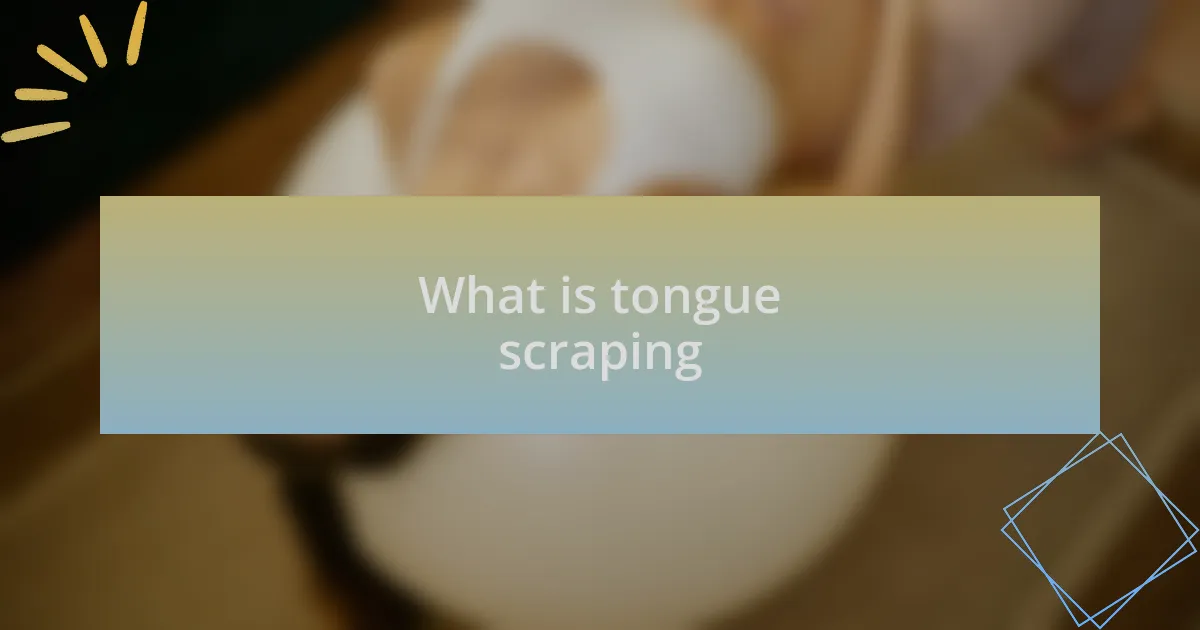
What is tongue scraping
Tongue scraping is a simple yet effective oral hygiene practice that involves using a tool to remove the buildup of bacteria, food particles, and dead cells from the surface of the tongue. I remember the first time I tried it; I was surprised at how much cleaner my mouth felt afterward. It’s like giving your tongue a much-needed refresh, and I often wonder how a small change can have such a significant impact on overall oral health.
The process typically uses a flat tool, often made of stainless steel or plastic, which you gently drag across your tongue from back to front. I used to be skeptical about its necessity, but after incorporating it into my routine, I noticed a marked difference in my breath. Have you ever felt self-conscious about your breath even after brushing? Tongue scraping can be a game-changer in tackling that issue, making it an essential part of your daily dental care.
Incorporating tongue scraping into my morning routine has not only improved my oral hygiene but also helped me cultivate a deeper awareness of my overall health. It’s fascinating how often we overlook the importance of our tongues in maintaining fresh breath and a healthy mouth. When was the last time you took a moment to care for your tongue?
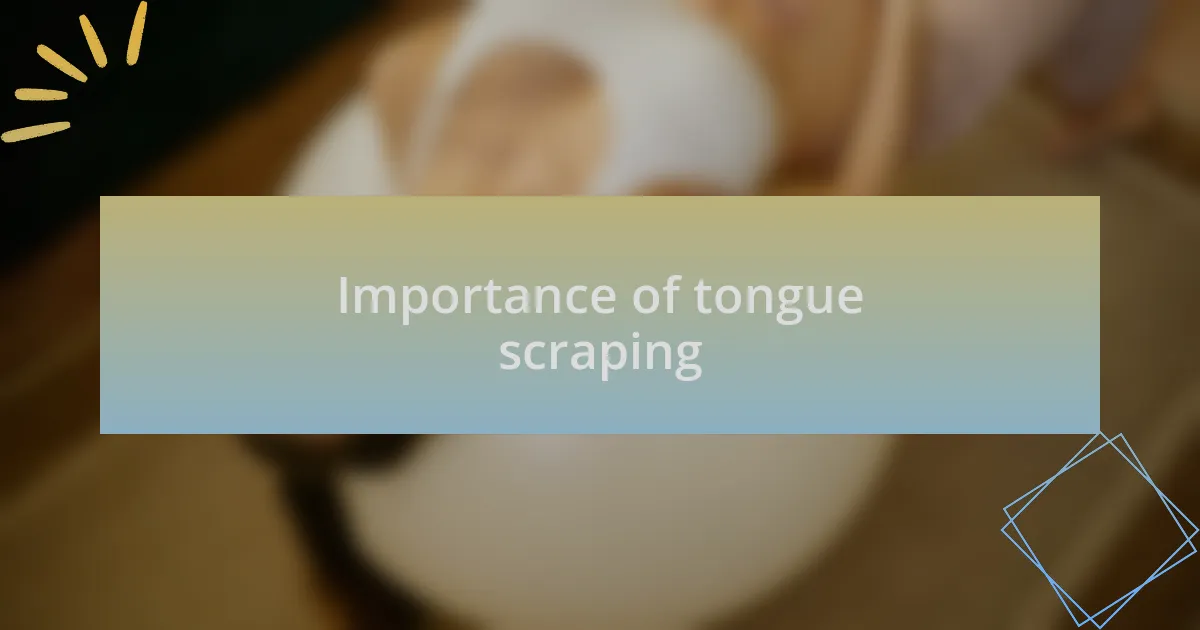
Importance of tongue scraping
Tongue scraping plays a crucial role in enhancing oral hygiene by effectively reducing harmful bacteria in the mouth. I remember chatting with a friend who struggled with persistent bad breath despite regular brushing; once they added tongue scraping to their routine, they couldn’t believe the transformation. Have you ever considered how the surface of your tongue could carry so much hidden residue that impacts your breath and taste?
Additionally, removing the buildup on the tongue can improve taste sensation. I’ve experienced this firsthand; after scraping my tongue, flavors seem to pop more vividly, making meals more enjoyable. It’s amazing how such a straightforward practice can unlock a richer dining experience. What if I told you that a few moments spent scraping could elevate your enjoyment of food?
Furthermore, tongue scraping supports overall oral health by preventing bacteria from spreading, which can lead to other oral issues like gum disease. There was a time when I neglected this step, and I noticed a correlation between that neglect and occasional gum sensitivity. Do you want to maintain healthy gums and avoid future dental problems? Incorporating tongue scraping into your routine can provide that extra layer of protection, making it a worthwhile addition to your daily regimen.
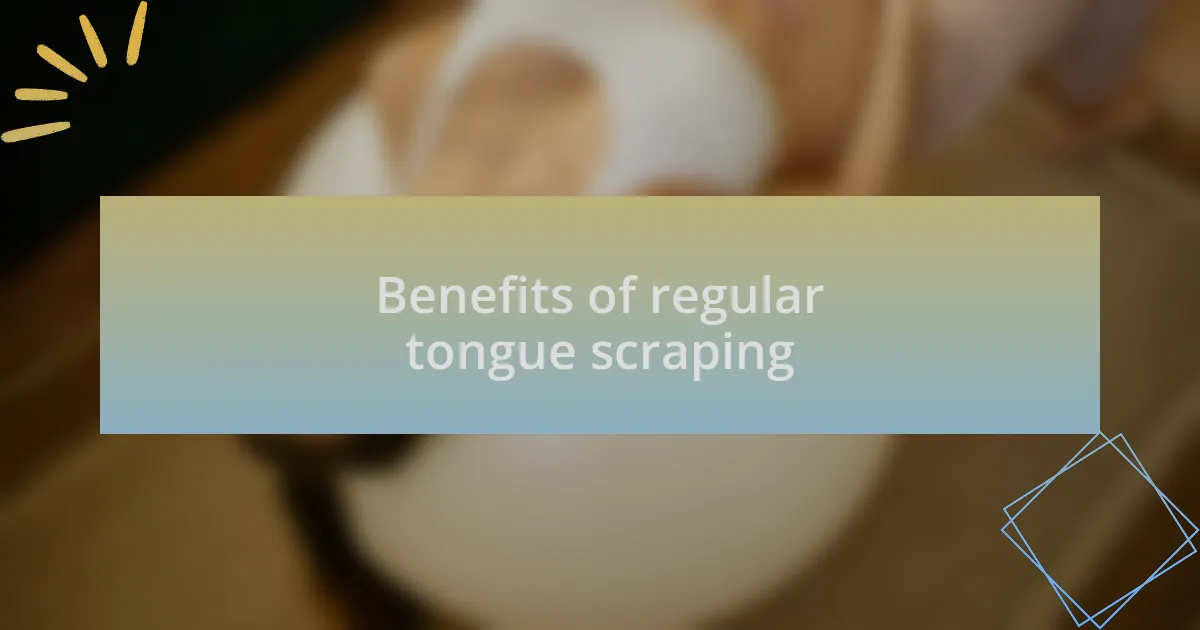
Benefits of regular tongue scraping
Regular tongue scraping can significantly boost your oral freshness by eliminating bacteria that contribute to bad breath. I once went on a weekend getaway and forgot my tongue scraper. After two days without it, I noticed my mouth felt heavy, and the freshness was gone. Have you ever had that nagging sense that something just isn’t right in your mouth?
Moreover, tongue scraping can enhance your overall oral health by reducing the risk of cavities and gum disease. I’ve had moments when an unexpected dental visit revealed early signs of gingivitis. I now realize that my newfound habit of scraping my tongue consistently plays a part in keeping my gums healthy. Isn’t it incredible how a simple act can transform our dental health?
In addition, this practice fosters better breath and confidence in social situations. I recall a time I was hesitant to engage in a conversation because I was self-conscious about my breath. Since I integrated tongue scraping into my routine, I feel liberated to speak freely. Have you considered how much your confidence could soar with a simple addition to your hygiene routine?
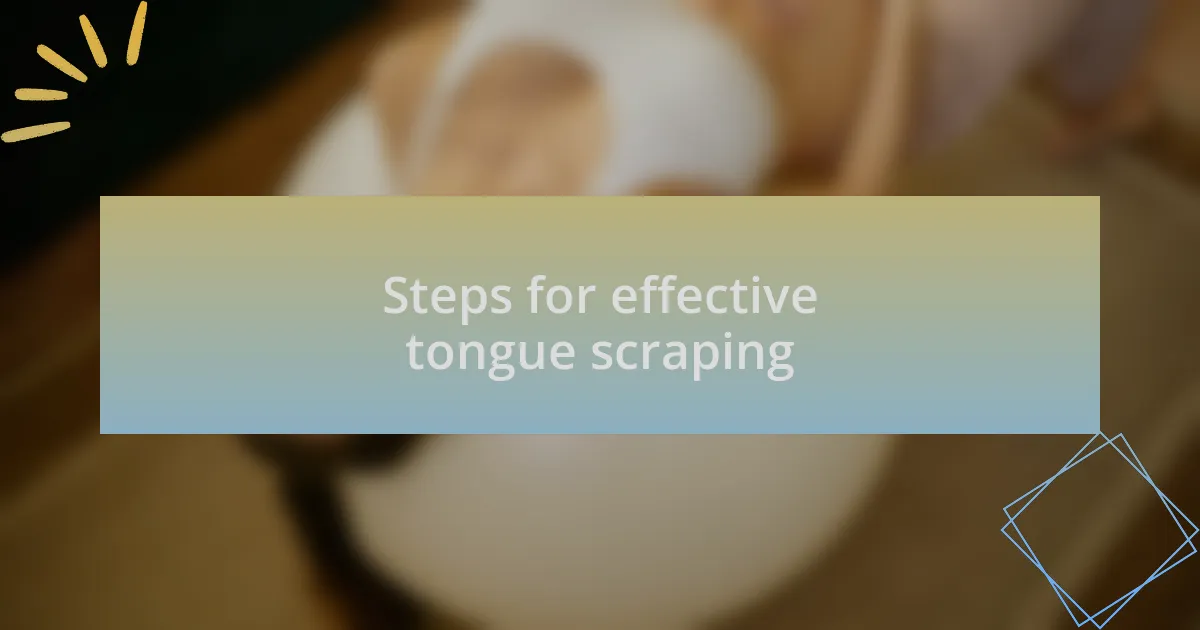
Steps for effective tongue scraping
To effectively scrape your tongue, first, make sure you have a clean tongue scraper, whether it’s plastic, metal, or even a toothbrush designed for this purpose. I remember the first time I used a metal scraper; the sensation was refreshing and oddly satisfying. Have you ever tried a tool that just clicked for you?
Next, gently glide the scraper from the back of your tongue to the tip, applying a slight pressure. The first time I tried this, I was surprised by the amount of gunk that came off. It’s fascinating how we often overlook the tongue during our oral care routine. Don’t rush this process; I find that taking my time makes it more effective and enjoyable—almost like a mini self-care ritual.
Lastly, rinse your scraper and mouth thoroughly after each use. I used to skip this step, thinking it wasn’t that important, but I’ve learned that a good rinse minimizes any lingering bacteria and keeps everything super clean. Have you experienced that level of freshness that comes from properly caring for your mouth? It’s definitely worth the effort!
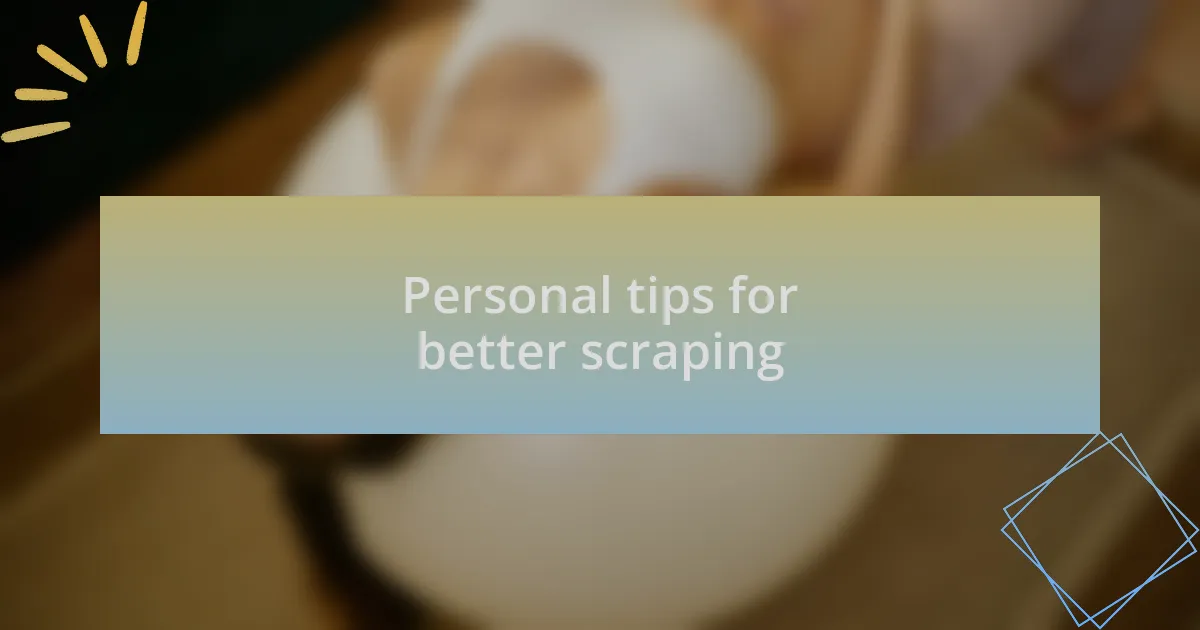
Personal tips for better scraping
When it comes to tongue scraping, the angle of your scraper can make all the difference. I used to scrape straight across my tongue, but adjusting the angle slightly allowed me to reach more areas effectively. Have you ever noticed how much more thorough you can be with just a small adjustment?
Another tip I find helpful is to scrape in the morning before eating or drinking anything. I’ve noticed that starting my day with a clean tongue not only helps with freshness but also enhances the taste of my breakfast—it’s truly remarkable how clear flavors can be when there’s no buildup on the tongue! Think about how much richer your morning coffee tastes after a good scrape.
Lastly, don’t forget to listen to your body. Initially, I was a bit too vigorous with the scraping, which led to some discomfort. Now, I pay attention to what feels right and adjust my pressure accordingly. It’s a gentle practice, and tuning into that helps me make the most of it without causing irritation. Have you ever found that being gentle in some routines can actually yield better results?